Even though Europe is full of the world’s most popular tourist destinations, some pockets have been mostly overlooked because of their history or circumstances. Riga, the capital of Latvia in the Baltic north, falls into that category. Despite being a beautiful and historic city, Riga has been slow to draw notice from international travelers. If they were to see the best things to do in Riga and learn how affordable a destination it is, though, they’d start packing right away.
If your curiosity is piqued and you don’t want to miss a thing, follow our Riga itinerary to learn how to best experience Riga in two days.
Best Time to Visit Riga
As it’s on the northern Baltic coast, Riga isn’t an ideal destination all year round. Weather really is the biggest factor in when to visit the Latvian capital.
With it being so far north, summer is the best time to visit Riga if you want ideal weather for being outdoors. Riga doesn’t yet suffer from a busy high season like many other European capitals do, so the crowds aren’t that bad in summer. June is the busiest time of year for Riga; by July and August, the crowds have already started to ease off.
Of course, you can still visit Riga at other times of the year. Attractions and accommodations are more affordable during the shoulder season, but if you go in spring, you’ll want to wait until May for the weather to warm up. Fall is also part of the shoulder season, so September and early October are just as good for traveling to Riga. Riga is cold and snowy in winter, though, with its Christmas markets being the season’s only saving grace.
How to Get Around Riga
To see everything we’ve included on this itinerary for visiting Riga, you need to understand how to get around. Riga certainly isn’t huge, but there are attractions at opposite ends of the city that would require a long walk to reach. Knowing how to get around for your weekend in Riga is even more important if you’re staying across the river from the historic city center.
Once you’re in the Old Town, it’s perfectly easy to walk from one attraction to the next. Most of the popular tourist spots are actually inside pedestrian areas, so getting around on foot is really your only option. Since you won’t necessarily be staying in the Old Town, though, you may want to know how to get there on public transport – which is also useful when you’re ready to go beyond the Old Town.
The city’s trams and buses can get you around the downtown area, across the river, and beyond. Both use the same e-ticket, along with disposable yellow and blue tickets that can be reloaded. A single trip costs just €1.15 (about $1.28) with the e-ticket, while a paper ticket bought from the driver costs €2.
Recommendation: Another great way to get around Riga and see all the important sights is with a hop-on hop-off bus tour. You can purchase a two-day pass here.
Where to Stay in Riga
You have a few areas to choose from when deciding where to stay in Riga. Thankfully, the city has quite an uncomplicated layout. Of course, the best places to stay in Riga are the ones that put you right in the beautiful Old Town or just outside of it. This way, the majority of Riga’s attractions are at your doorstep or just a short walk away.
The downtown area northeast of the Old Town is also fairly central, with a huge selection of restaurants and shops close at hand. If you stay across the Daugava River, the trade-off for potentially cheaper accommodation is the need to catch a bus or tram back over to the city center.
There’s no better place to spoil yourself during your Riga stay than the Grand Poet by Semarah Hotels. This five-star hotel overlooks Bastion Hill Park on the edge of the Old Town and boasts a beautiful contemporary design in its rooms, not to mention a gym, spa, and fully equipped wellness center.
With its selection of rooms, suites, and apartments, the Rixwell Konventa Seta Design Hotel is a flexible midrange place to stay. Not only is the location ideal and the rooms spacious, but you can fill up with a free breakfast buffet each morning.
Riga excels at budget accommodation, offering plenty of hostels, but one of the best is Tree House Hostel in the Old Town. With a simple, homey feel, this hostel combines well-kept rooms with a positive, friendly atmosphere.
You can also find vacation rentals to suit all budgets on Airbnb. For recommendations, check out our list of the best Airbnbs in Riga.
For more accommodation options in Riga, check out Booking.com. This site consistently offers the best rates, and its customer service is on point.
The Perfect 2-Day Riga Itinerary
In many ways, Riga is a perfect place for a city break, as you can quickly dive into what makes this city so memorable. For your 48 hours in Riga, follow this itinerary to each of the city’s most interesting places, which will help you understand Riga’s past and get a feel for life in Latvia. Along the way, we’ll show you the sights of the wonderful Old Town and then see more modern spots in the downtown and residential areas. That way, you’ll get to experience the very best of Riga.
However, before we get to our Riga itinerary, we just wanted to remind you to purchase travel insurance. You never know what will happen and, trust us, you do not want to get stuck with thousands of dollars in medical bills. As a wise man once said, “If you can’t afford travel insurance, you can’t afford to travel.” So don’t leave home without it.
SafetyWing offers travel insurance for only about $10 a week, making it a no-brainer to get. You can get a quick, non-binding quote below:

SafetyWing is, of course, not the only option available. Two other popular alternatives are World Nomads and Heymondo.
Now that you’re covered for your trip should the worst happen, let’s get back to the fun stuff – the best places to visit in Riga! You’ll find them all in our Riga travel itinerary.
Riga Itinerary: Day 1
It’s best to head straight to the Old Town when you arrive in Riga. This gets you right to the star attractions and gives you a feel for the city.
Recommendation: If you want to learn more about the history of Riga, consider booking this private walking tour. The guides not only speak great English, but also are super knowledgeable about Riga and all its beautiful sights.
Bastion Hill Park
A great way to start your exploration of the Old Town is to visit Bastion Hill Park along its northeast edge. Once serving as the city’s fortifications, Bastion Hill was replaced with this romantic park full of gardens, canals, and ornate bridges.
The park makes a great transition space between downtown and Riga’s historic center, while also being an attraction in its own right. Key landmarks in the park include the mighty Freedom Monument, which is dedicated to those who fought for Latvia’s independence, and the sightly Latvian National Opera and Ballet.
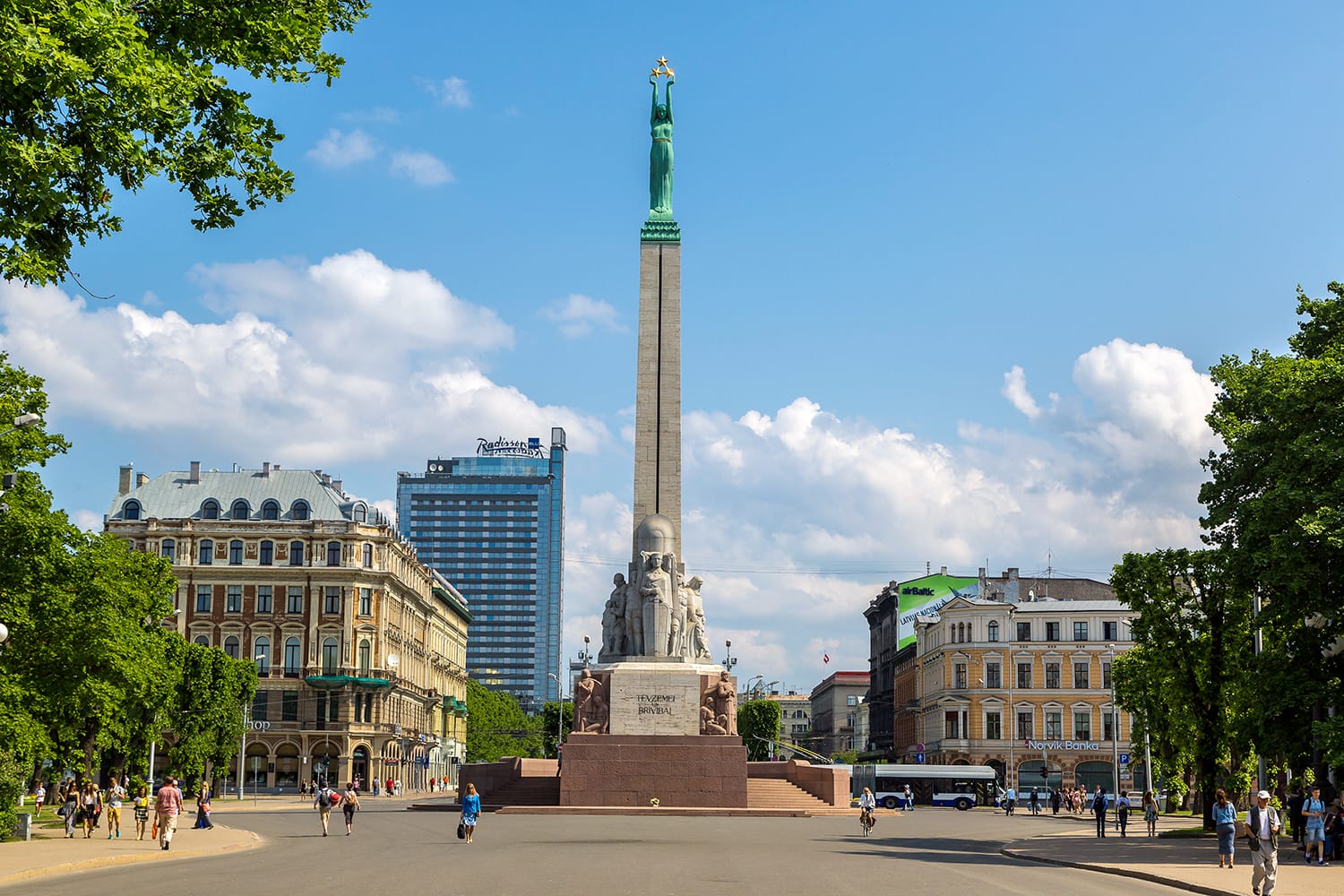
Old Town
Depending on which way you enter the Old Town, it could either be obvious as the city’s historic center or seem like any other part of Riga. Kaļķu Street is the main thoroughfare that slices straight through the Old Town, but it isn’t particularly scenic or atmospheric at first glance. Smilšu Street is far less subtle about its historic nature, especially with the ivy-covered Powder Tower in view.
Once you actually enter the Old Town and spend a minute there, though, it’s hard to deny the quaint charm of the historic city center. It’s easy to get turned around in this unruly maze of medieval streets, but that’s half the fun, right?
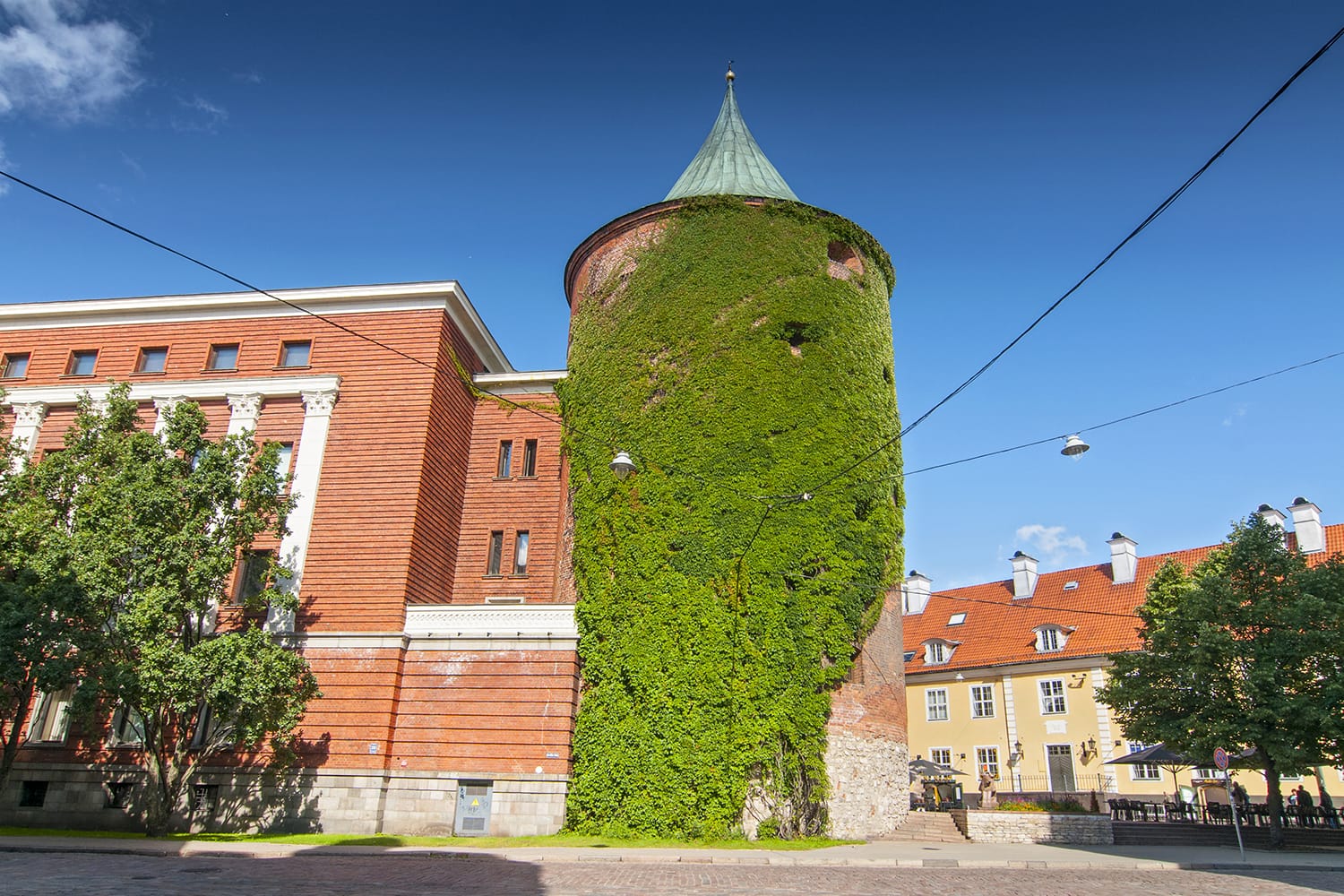
Līvu Square
Following Kaļķu Street, you should soon arrive at Līvu Square. This square was created after the destruction caused by World War II and has become one of the Old Town’s brightest and most cheerful corners. You’ll see flower beds full of life and color in the center of the square, while the cafes and restaurants around the sides feature a fascinating mix of architectural styles. Buildings not to miss in Līvu Square include the Small Guild, which looks like a small Gothic castle, and the distinguished Mikhail Chekhov Riga Russian Theatre in the corner.
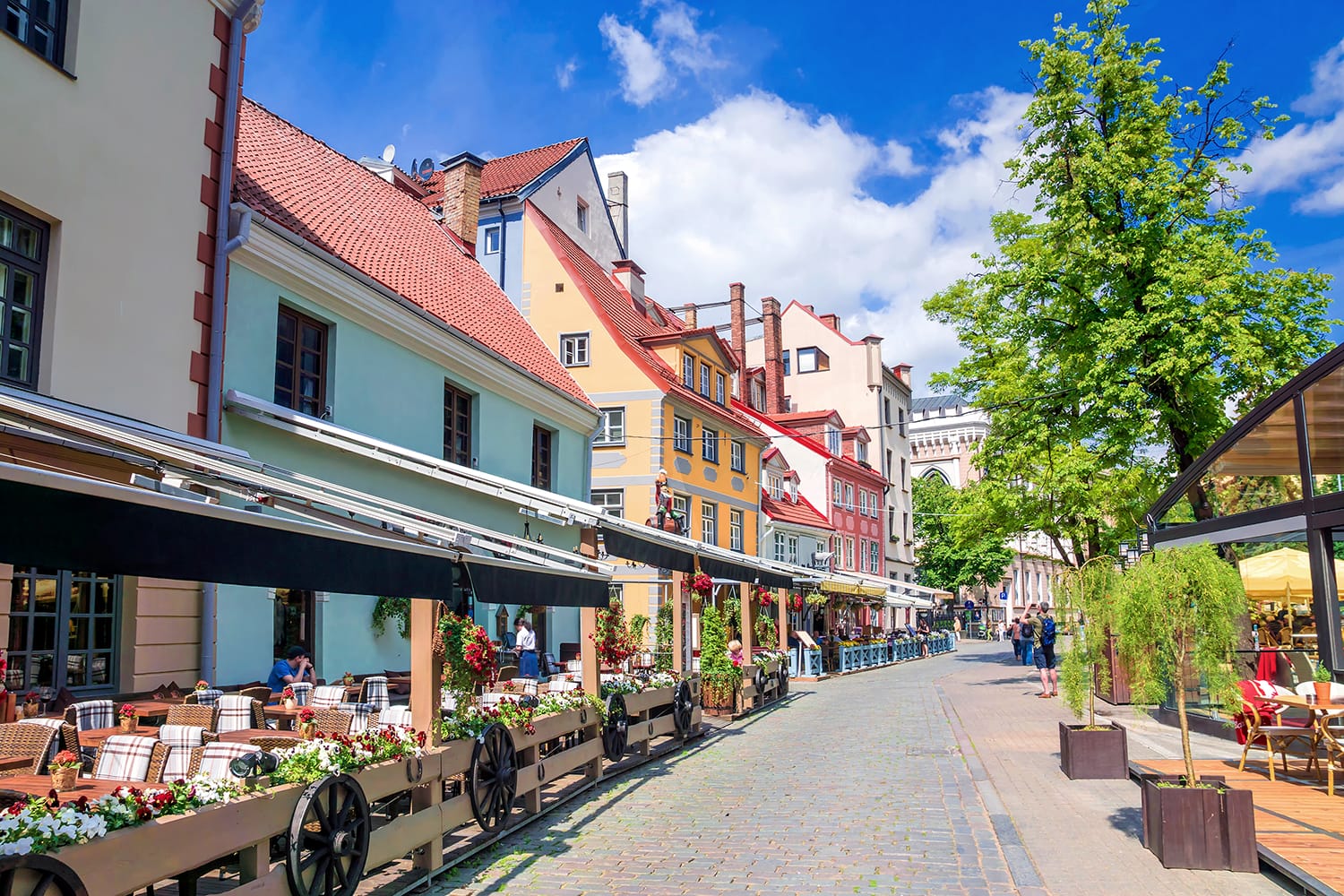
St. Peter’s Church
Working your way through the backstreets of the Old Town, you’ll come to a fixture of Riga’s skyline, St. Peter’s Church. This large Gothic church – the tallest in the city – dates all the way back to 1209, although little of the original church is actually left. Even more than the main hall and artwork inside, the biggest attraction here is the 130-meter climb up the tower and the accompanying views over the rooftops of the Old Town and the rest of the city.
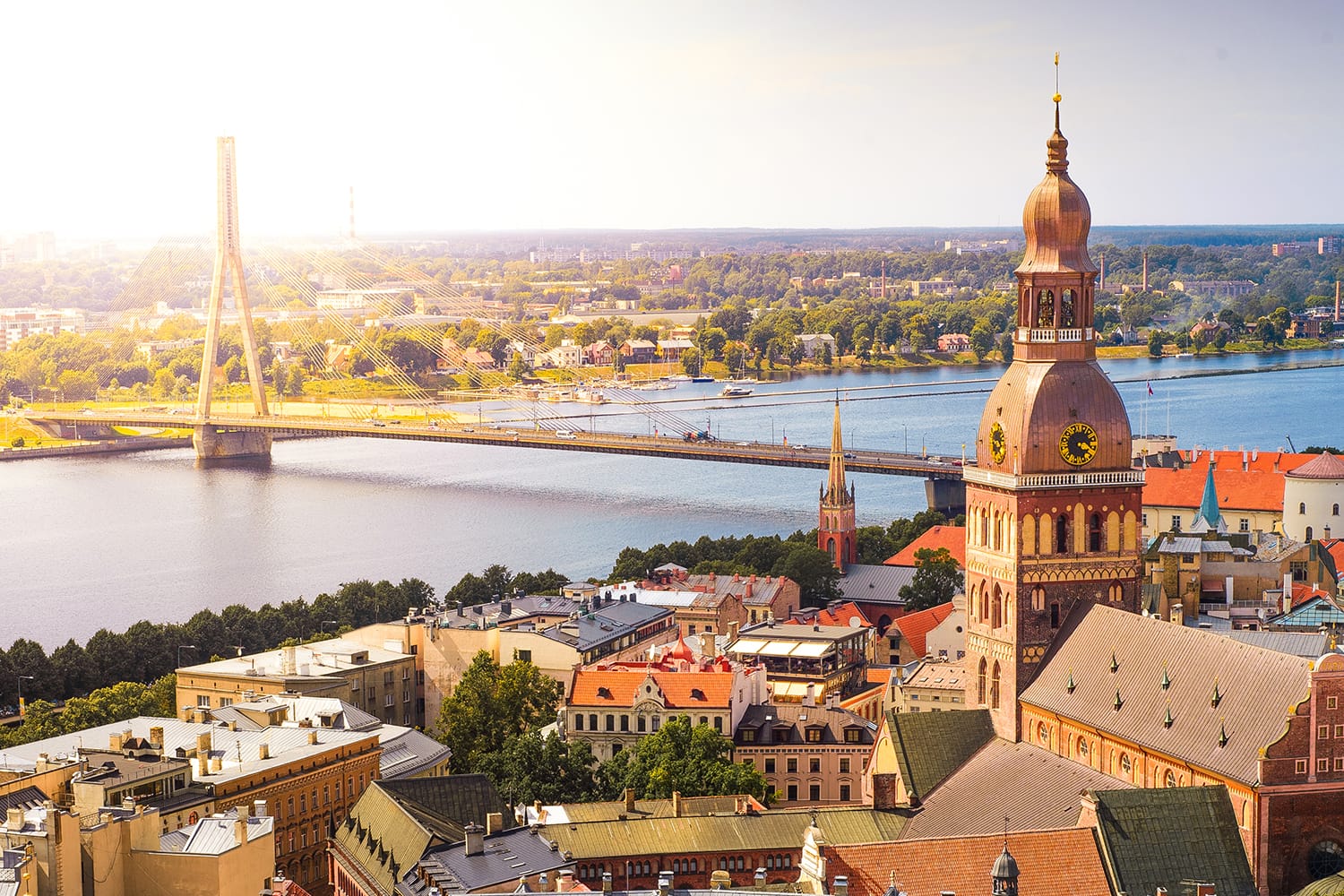
Bremen Town Musicians Monument
After you visit the church, head around the back to see the little market and gardens there. This is also where you’ll find one of the most photographed statues in the city, the Bremen Town Musicians. This sculpture of animals stacked on top of each other is a gift from the German city of Bremen that represents the Grimm fairy tale of the same name – and gets a lot of love from tourists.
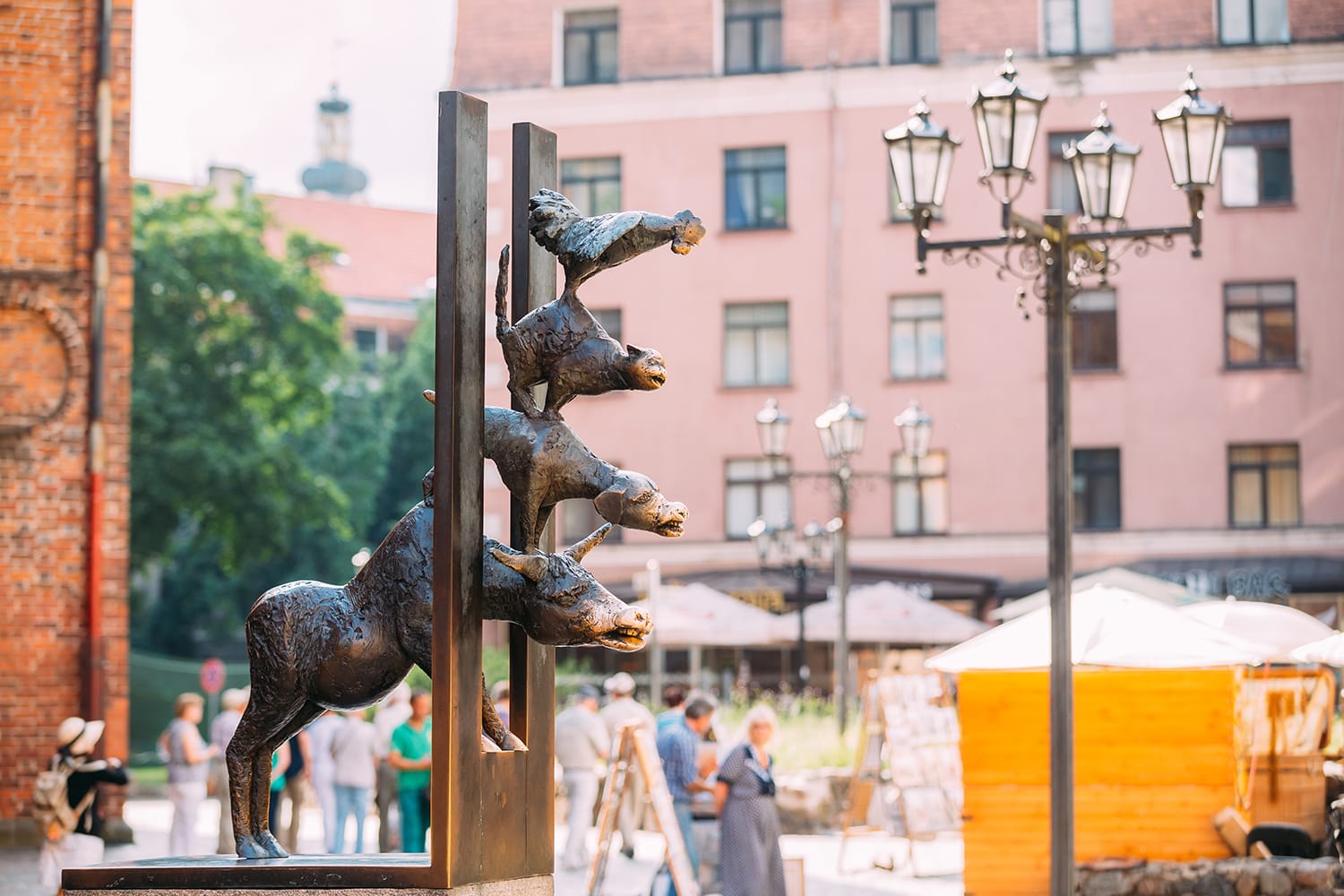
Dome Square
Another of Riga’s enchanting city squares is Dome Square, which sprawls out below the impressive Riga Cathedral. Pay attention to the beautiful brickwork of the medieval cathedral, then scan the square for its other sights. While the Art Museum Riga Bourse and various government buildings draw attention with their architecture, it’s the gripping street art over the Doma Dārzs restaurant that catches most visitors’ eyes.
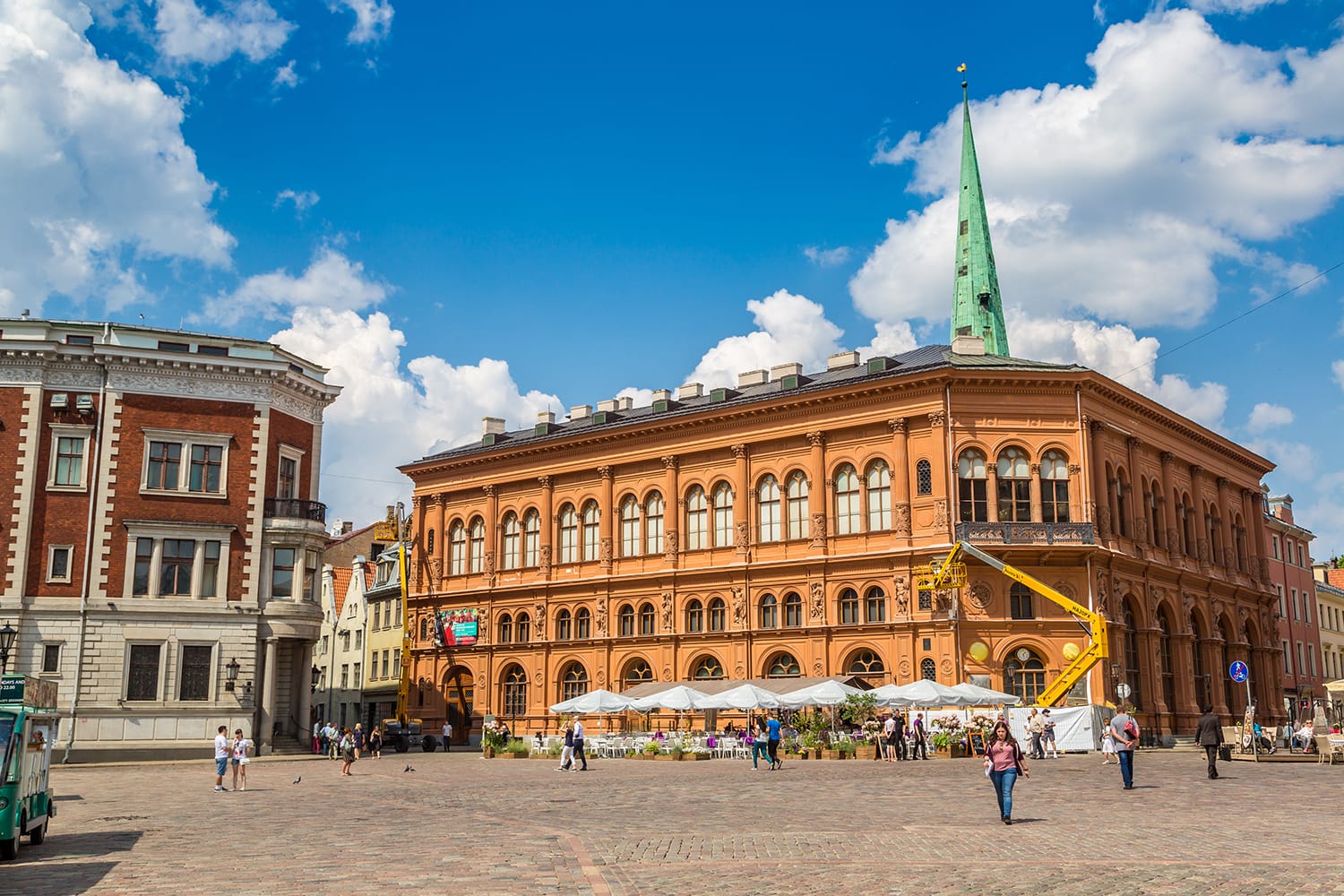
Three Brothers
There are many exceptionally well-preserved buildings throughout Riga, but the Three Brothers complex is where you’ll see the oldest residential buildings in the city. These three adjoined buildings were built between the 15th and 17th centuries and are home to local craftsmen. Each has its own vastly different design full of flourishes and quirks, like the inscription of “Glory to God alone” over the middle building.
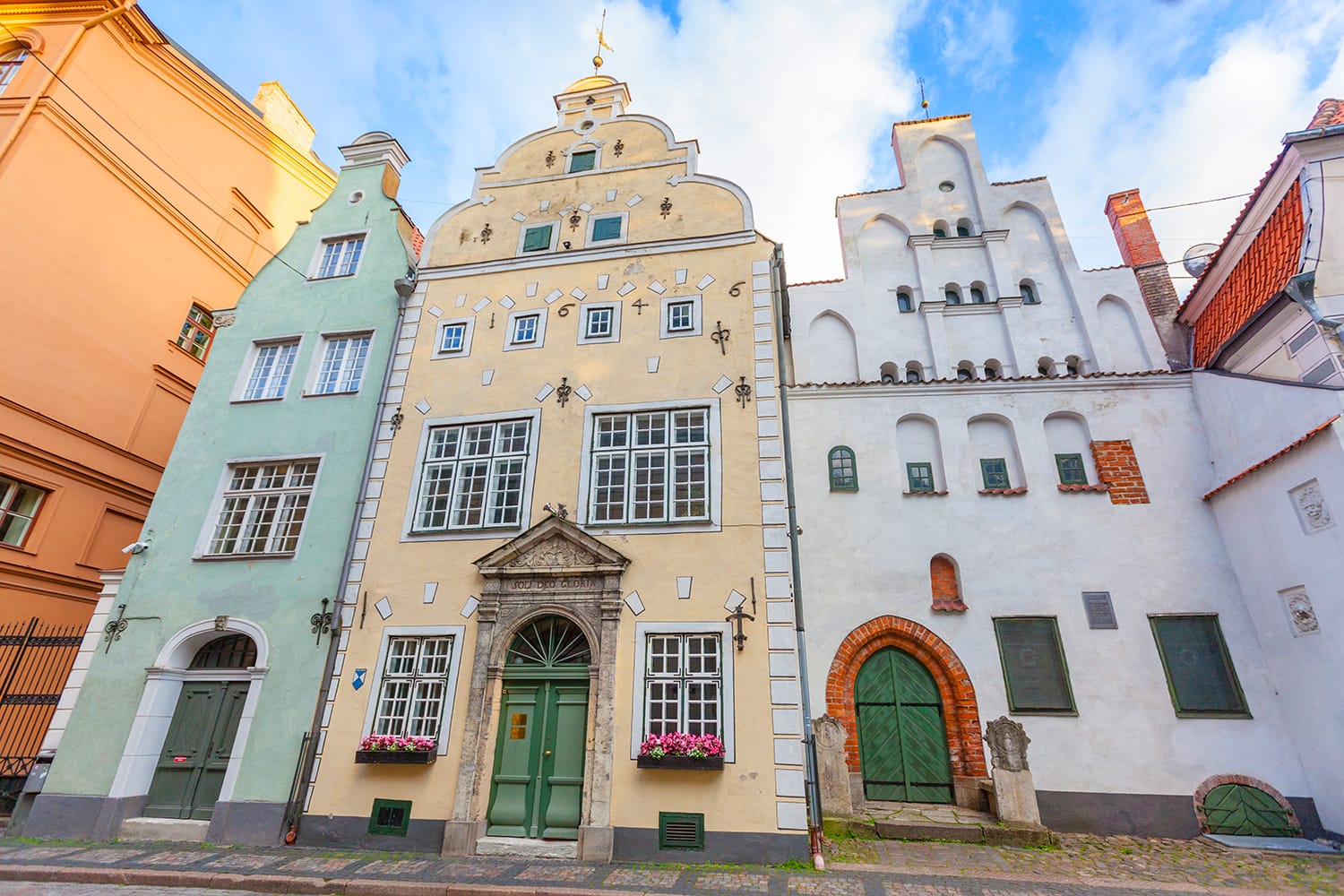
Swedish Gate
Although Riga was once a walled and fortified town, not much of the city’s defenses are still standing. One of the few remnants is the Swedish Gate, a gateway through what looks like a row of traditional residences. Though small, the gate bears Riga’s textbook medieval charm. Along from the gate, you can walk down either side of what’s left of the town walls – down a narrow cobblestone alley or past the restaurants of Torņa Street.
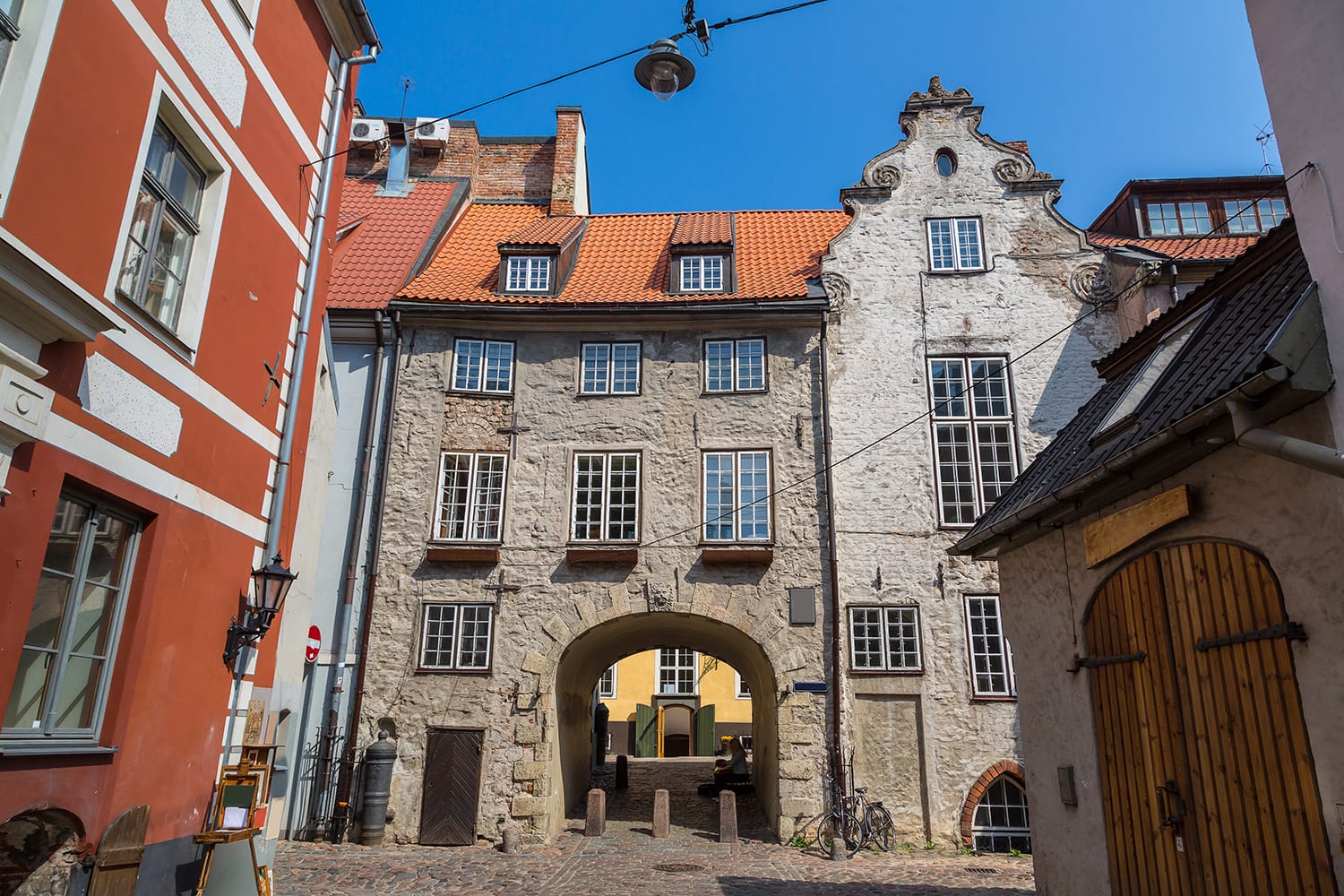
House of the Blackheads
Finish exploring the Old Town with a stop at Town Hall Square to see the iconic House of the Blackheads. Though this building sits across from Riga Town Hall, it easily draws all the attention of sightseers with the stunning design of its facade.
Built for members of a merchant guild known as the Blackheads in the 14th century, this is one of Riga’s most picturesque landmarks, despite the original having been destroyed in World War II. Beyond admiring its beautiful exterior, you can tour inside to see museum exhibits and the re-created grandeur of its conference hall.
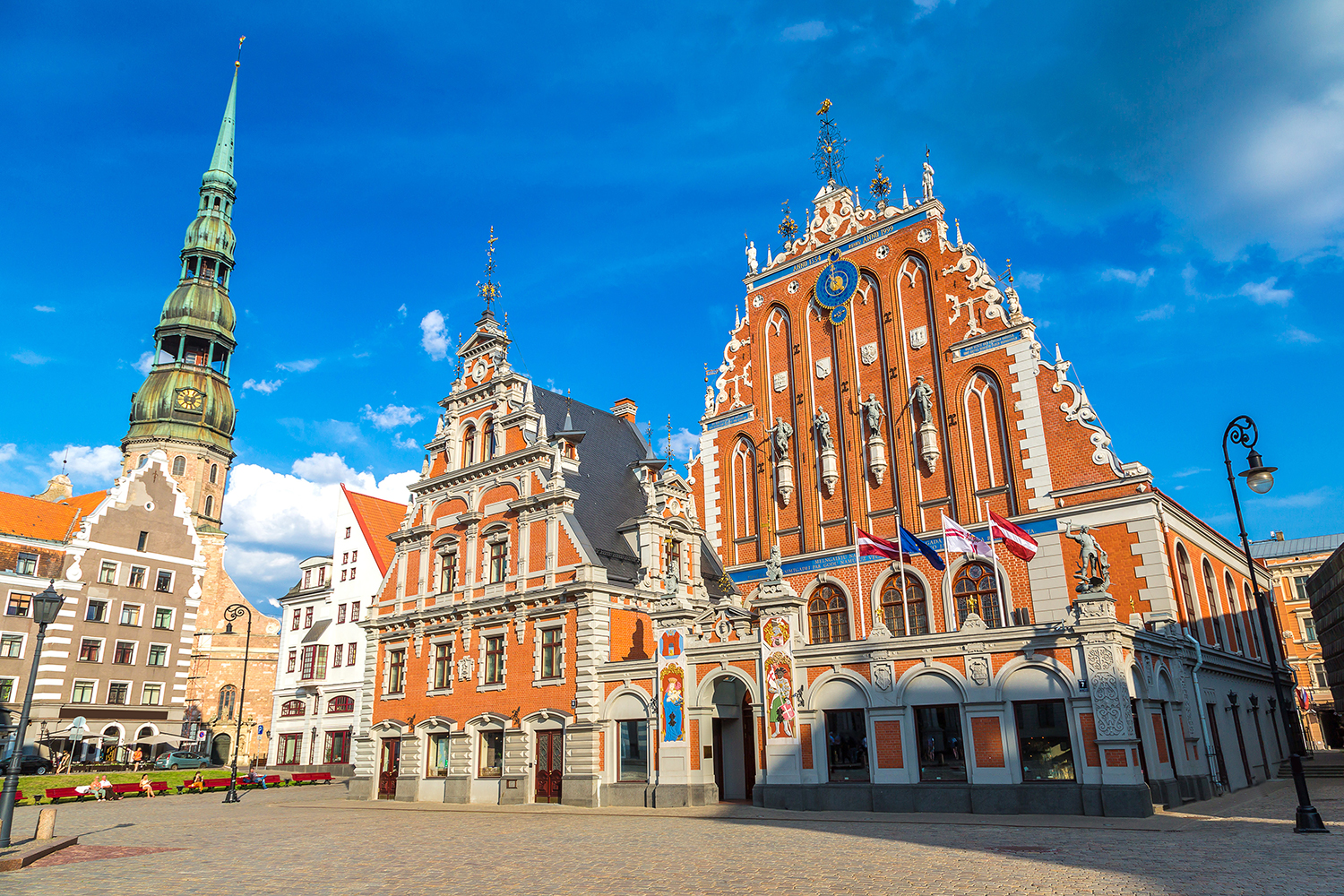
Riga Itinerary: Day 2
On your second day in Riga, it’s time to find all the landmarks outside the Old Town.
Central Market
A great way to start the day and get a sense of local life is a visit to Riga Central Market. This bustling market is both indoors and outdoors, encompassing several large 1920s pavilions and the area around them. Here you’ll see plenty of Latvian goods and foods, including fish, meats, and locally grown produce. The scent of strawberries permeates the outside, especially in early summer!
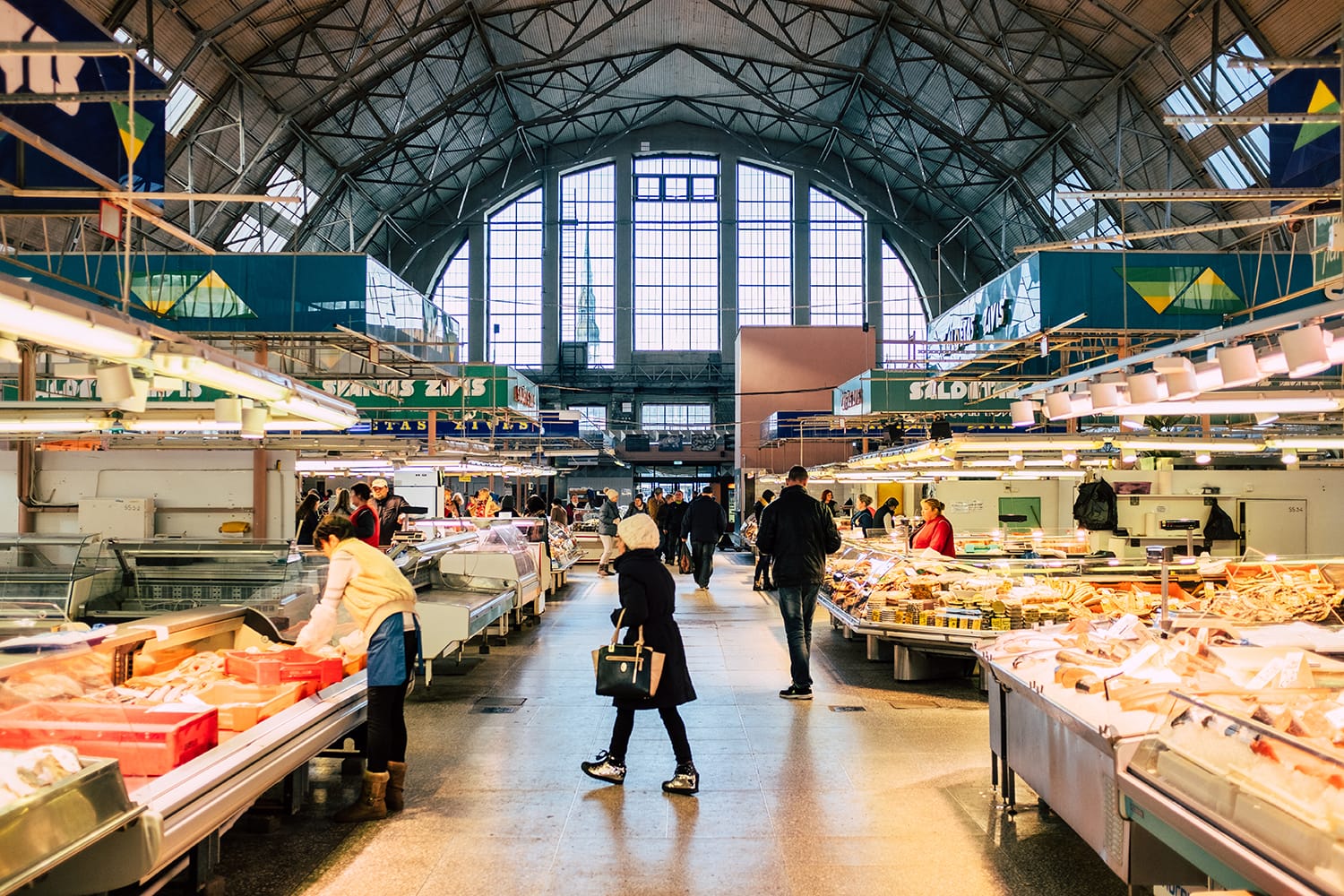
Riga Ghetto and Latvian Holocaust Museum
With a walk along the riverfront, you’ll soon arrive at the Riga Ghetto and Latvian Holocaust Museum, which details the city’s Holocaust history. This outdoor museum details what happened to the local Jewish population during the city’s Nazi occupation and the devastating events of the Rumbula massacre. The exhibits focus on individuals’ stories and photographs from the time.
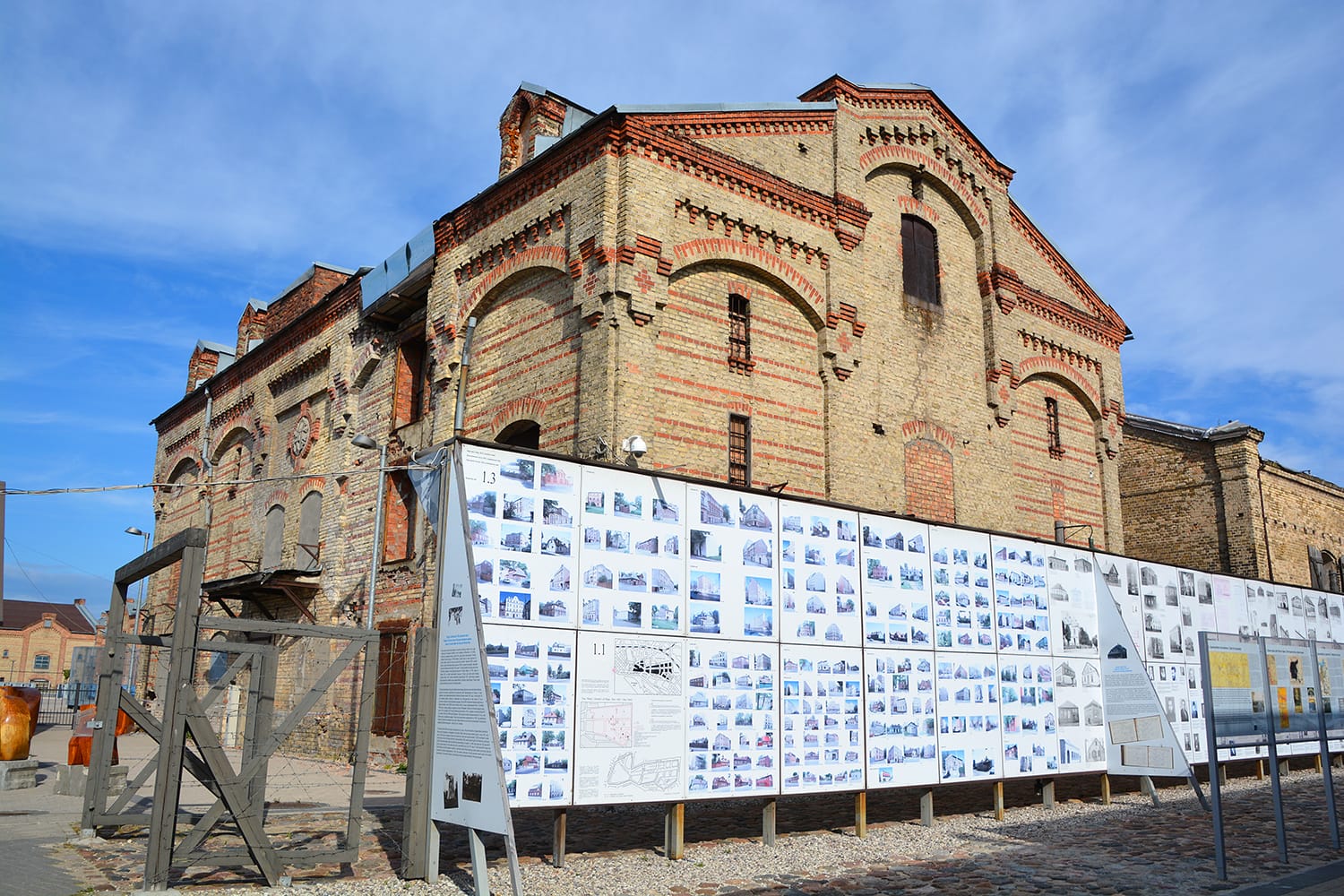
Latvian Academy of Sciences Observation Deck
Just up the road from the Holocaust museum, the towering Latvian Academy of Sciences is hard to miss. Built during Latvia’s period under Soviet rule, the tower looks very similar to the huge Palace of Culture and Science in Warsaw, Poland.
Unless you have business at the academy, the best way to visit the tower is to take the elevator up to its observation deck. Much like at St. Peter’s Church, you get great views of Riga, but with the church tower visible against the skyline this time.
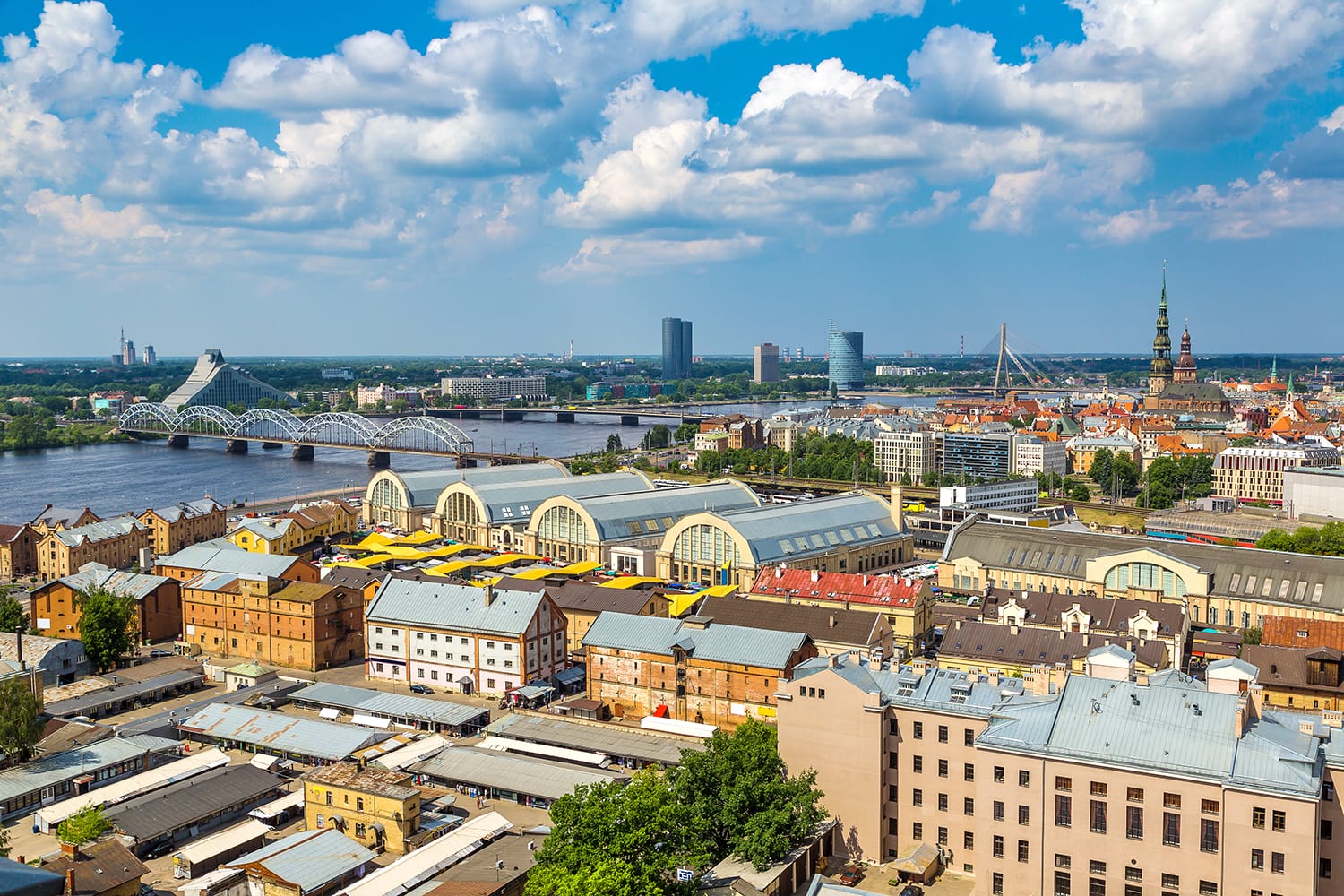
Nativity of Christ Cathedral
Compared to the restrained look of the Lutheran churches in the Old Town, the Riga Nativity of Christ Cathedral really stands out. This Russian Orthodox church in Esplanāde Park gleams thanks to its gilded facade, and it’s striking inside as well. While the cathedral has been under restoration since 1991, you can still go inside and admire the painted icons it’s best known for.
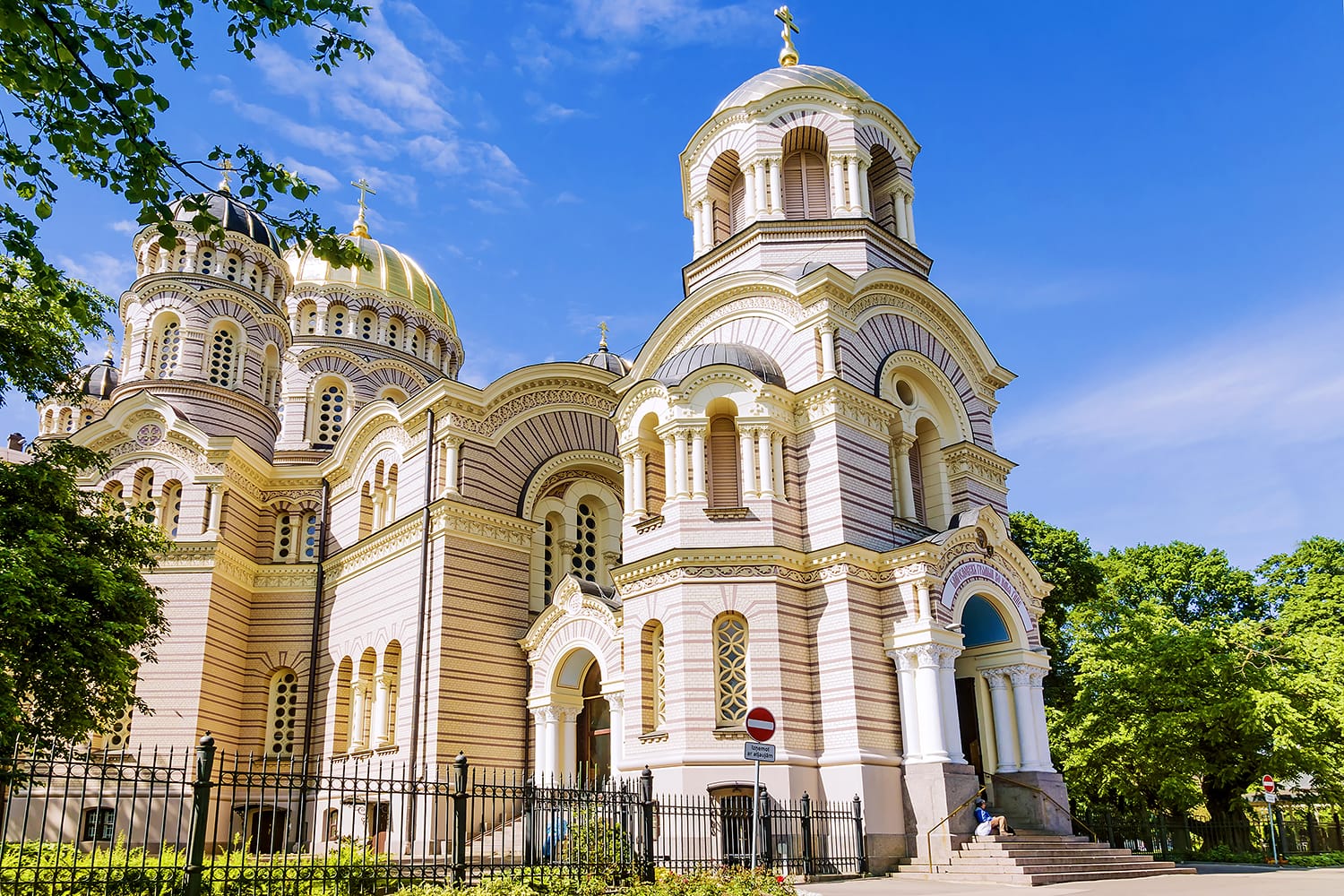
Art Nouveau Buildings
Riga has undergone a recent restoration phase, revitalizing many of its faded art nouveau buildings into pristine gems. While you can find them all through the central downtown area, the best place to see them is in the neighborhood centered on Alberta Street. While this is the most spectacular of the streets, you’ll also find art nouveau buildings on Elizabetes Street and Antonijas Street. Searching for these architectural beauties is a great way to strike out on your own and uncover everything else that Riga has to offer.
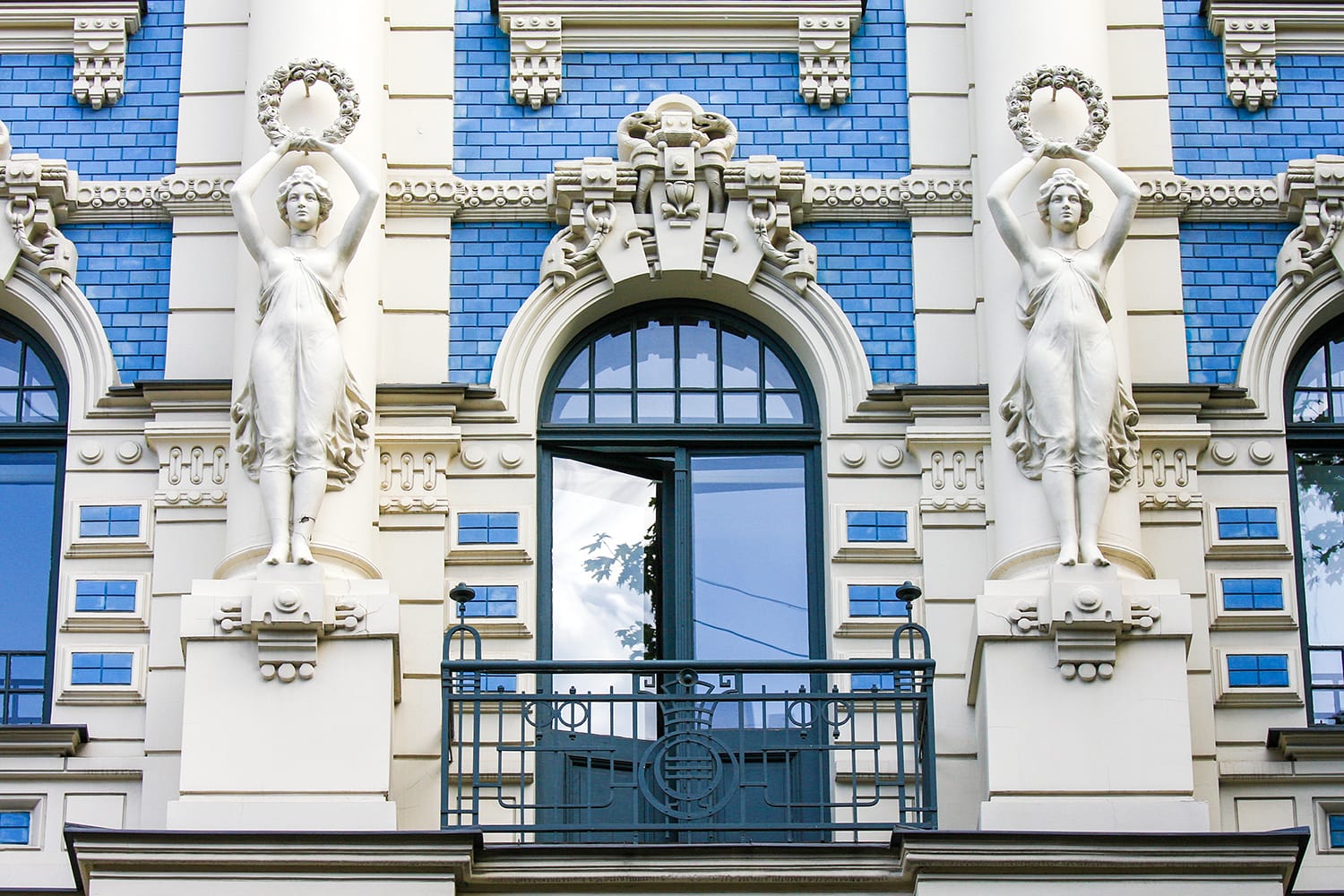
Corner House KGB Museum
Like the rest of the Baltic states, Latvia became part of the USSR during WWII. Living under Soviet rule meant being under the watchful eye of the KGB, the history of which you can learn about at the Corner House. This was the headquarters where the Russian secret police operated and tortured subjects. It’s free to visit the museum exhibits inside, which explain the history of the building and the KGB’s operations in Riga, but you’ll need a tour to see the full museum.
You should now have a much better idea of what two days in Riga can involve and how special a place it is. If you have more time there, check out our article on the best day trips from Riga.

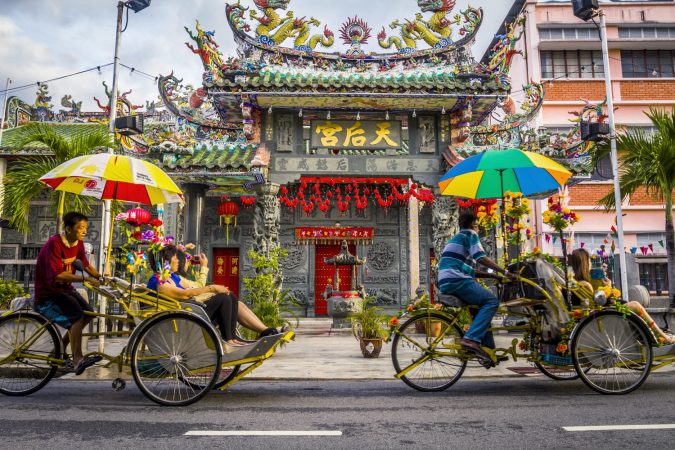
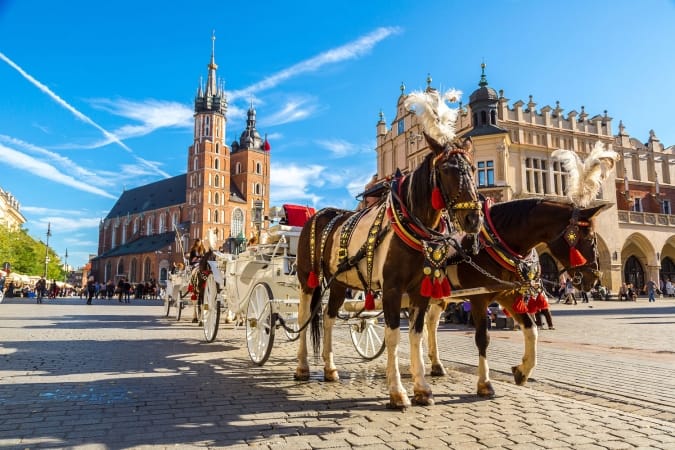
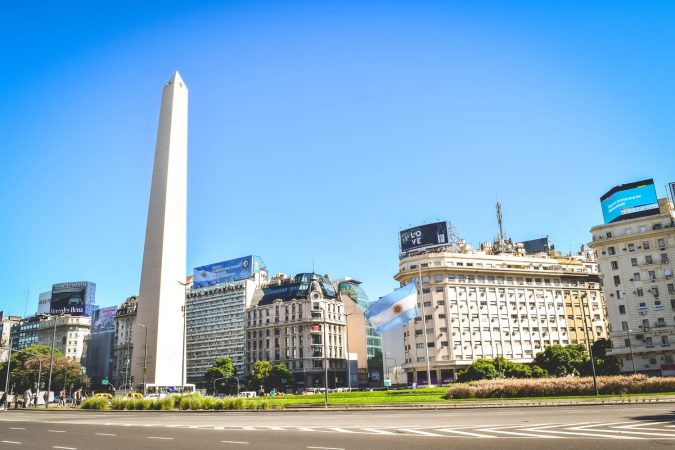
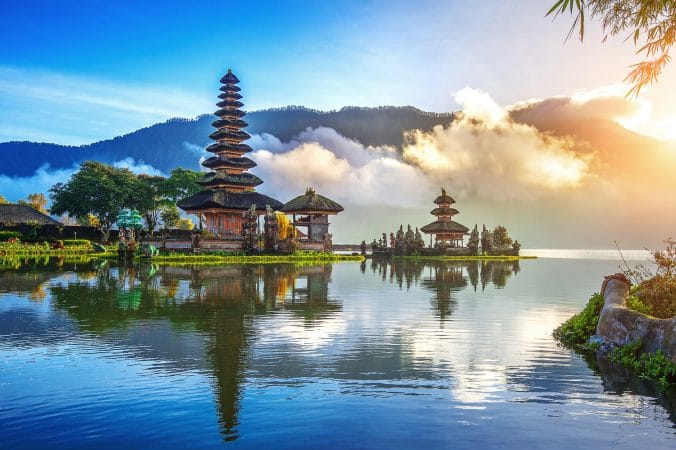


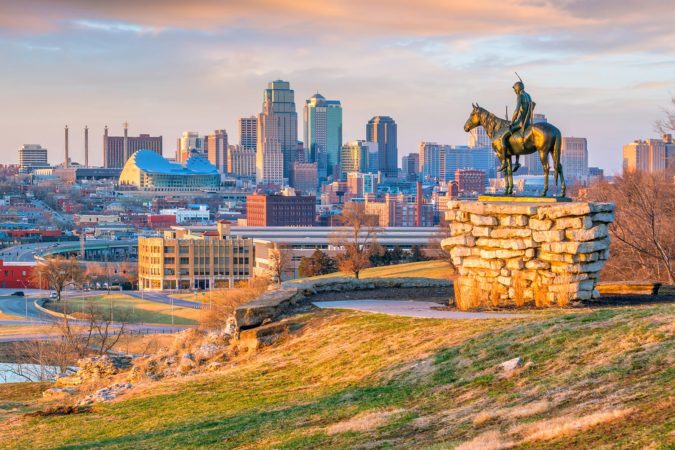
Comments